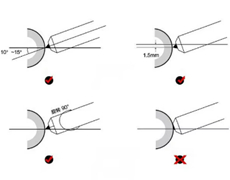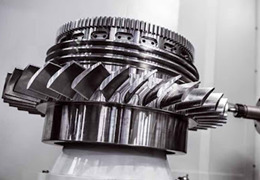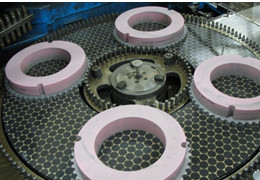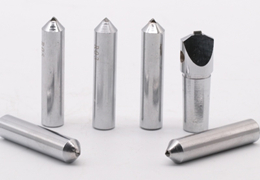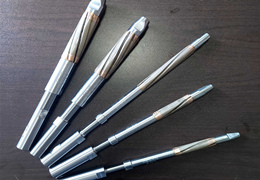What is surface roughness?
.png)
Surface roughness refers to the unevenness of the processed surface with small spacing and tiny peaks and valleys. The distance between two peaks or two valleys (wave spacing) is very small, generally less than 1mm, and it is difficult to distinguish with the naked eye, it belongs to the micro-geometry error. The smaller the surface roughness, the smoother the surface. The size of the surface roughness has a great impact on the performance of mechanical parts.
How is surface roughness formed?
Surface roughness is generally formed by the processing method used and other factors, such as friction between the tool and the part surface during processing, plastic deformation of the surface layer metal during chip separation, and high frequency vibration in the process system. Because of the different processing methods, the machining condition of the part surface must be classified and determined according to the dimensional accuracy. There are countless categories between parts with rough surfaces and parts with smooth, clean surfaces. And the magnitude of the quantity that indicates this feeling is the surface roughness. It is mainly influenced by the tool used for machining and the method of machining, and the surface being machined leaves traces of varying depths, densities, shapes and textures.
Surface roughness and mechanical parts with the nature of the fit, wear resistance, fatigue strength, contact stiffness, vibration and noise, etc. have a close relationship, the service life of mechanical products and reliability has an important impact.
How to determine the surface roughness?
The length of the reference line used to identify the surface roughness characteristics is called the sampling length, the rougher the surface, the greater the sampling length should be. The sampling length is specified in order to limit and diminish the influence of other geometric errors on the surface roughness measurement results. In the sampling length range, generally include more than 5 profile peaks and valleys. Under ISO1997 standard, 0.08mm, 0.25mm, 0.8mm, 2.5mm, 8mm are generally used as reference lengths. And the evaluation length is composed of N reference lengths. The surface roughness of each part of the component surface cannot be truly reflected in one reference length to show the real parameter of roughness, but need to take N sampling lengths to evaluate the surface roughness. The evaluation length under ISO1997 standard is generally N equal to 5.
The evaluation of surface roughness is now becoming more and more important in the manufacturing industry. To study surface roughness, a special machine - roughness measuring machine - is required and most of the correct and complete surface roughness measurements are made using a special measuring machine.
.png) Representation of surface roughness
Representation of surface roughness:
Ra indicates the arithmetic mean deviation of the profile: the arithmetic mean of the absolute value of the profile deviation within the sampling length.
Rz indicates the microscopic unevenness ten-point height: the average of the maximum contour peak height and the average of the five largest contour valley depths within the sampling length.
The difference between Ra and Rz:
1, the use of a wide range of different degrees.
Ra is the most important evaluation parameter, Rz is generally used only to indicate the relatively short surface. In the actual processing of the representation, the use of Ra to indicate the roughness than Rz common.
2, the calculation is different.
Arithmetic mean deviation Ra is the arithmetic mean of the longitudinal coordinate Z within a sampling length, so the absolute value, recorded as Ra. Rz is the sum of the mean of the five largest profile peak heights and the mean of the five largest profile valley depths within the sampling length.

Moresuperhard focuses on the research and development of grinding and polishing products, providing high quality and high precision grinding products and services for customers' workpiece processing! If you have any questions during the grinding process, please feel free to consult our senior engineers and consultants!

.png)
.png)

